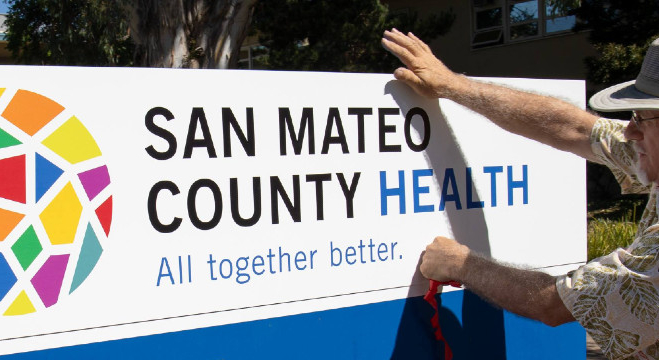San Mateo County’s progress on COVID-19 means restaurants, gyms, fitness centers, churches and movie theaters, among others, could soon be allowed indoors with modifications. County officials are urging residents to follow public health orders in order to ensure that happens.
Currently under California’s color-coded blueprint for reopening, San Mateo County is in the most restrictive purple tier with “widespread” risk. A county’s tier is based on its rate of positive test results and adjusted case rate. Counties within the purple “widespread” tier have an overall test positivity rate of over 8 percent and an average of over 7 new daily cases per 100,000 residents.
The good news? For the week ending Sept. 5, San Mateo County’s overall positivity rate was 4.1 percent and its adjusted case rate was 6 per 100,000. Those figures meet the state’s criteria to move into the less-restrictive red tier, which denotes “substantial” risk. In order for the County to officially move to the red tier, it must meet the next tier’s criteria for two consecutive weeks.
“If we meet the criteria for a second week (September 6-12), we could then move to the red tier,” the County said. “We’ll learn if we can see fewer restrictions when the state releases testing results on Tuesday, Sept. 22.”
Moving into the red tier allows:
- Restaurants indoors (max 25% capacity or 100 people, whichever is fewer)
- All retail indoors (max 50% capacity)
- Shopping centers, swap meets indoors (max 50% capacity, closed common areas)
- Museums, zoos and aquariums (max 25% capacity)
- Places of worship (max 25% capacity or 100 people, whichever is fewer)
- Movie theaters in doors (max 25% capacity or 100 people, whichever is fewer)
- Gyms and fitness centers indoors (max 10% capacity)
- And more
With the goal of helping the County reach the red, health officials are urging residents to wear face coverings in public, wash their hands regularly, maintain six feet of social distancing, avoid large gatherings, limit mixing with people you don’t live with and to get tested.






